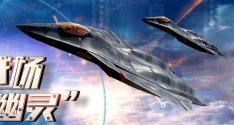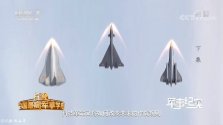Han's Laser makes laser systems, and procures laser sources primarily from IPG photonics; they're not direct competitors, but different parts along the supply chain. Raycus is China's domestic competitor to IPG photonics, and has been closing the gap tech-wise, but still have room to improve in laser source reliability and power drop-off thousands of hrs after usage.Check Han laser . However the world leader is trumpf and ipg photonics.
You are using an out of date browser. It may not display this or other websites correctly.
You should upgrade or use an alternative browser.
You should upgrade or use an alternative browser.
PLA next/6th generation fighter thread
- Thread starter Blitzo
- Start date
- Status
- Not open for further replies.
This is just fan art. Real sixth gen is going to be flying wing with collapsible/all moving wing tips.
I'm going to continue the discussion here about DEWs/lasers and engines.
Well, from the gensets associated with the engine -- also known as the PTMS (power thermal management system) for an engine. But that is inherently separate from the engine itself, to my knowledge.
Here are a few useful articles on the matter:
This one below is a paper describing the space, weight and power and cooling requirements for a hypothetical F-35 equipped with a 100kW laser, which among other things assumes a 1.2MW of input power required with a 10% wall plug efficiency.
Now, the required input power could depend on the degree of wall plug efficiency -- a higher efficiency means you can have a lower input power for the same laser output.
However, the "input power" itself isn't directly just a reflection of engine thrust. Instead, it is a reflection of the shaft power of the engine and the generator set associated with the engine which is what produces the power for the laser.
The genset associated with the engine needs to be sufficiently small and able to produce sufficient power for it to be fitted inside the aircraft's fuselage while also being able to meet the input requirements for the laser -- in this specific case, being 1.2MW.
You can have all the engine thrust in the world, but if you don't have a generator able to translate that into power, then you don't have anything to power the laser with.
.... Now, going back to J-20, the reason I say that I don't think engines is that much of an issue, is because there have already been demonstrators of equivalent thrust engines to the WS-10 family that have produced impressive power outputs for laser applications.
In this link below, we can see that GE had modified a F110 engine (same engine class/generation as WS-10, and used to power F-15s and F-16s), to generate 1MW of power, through the shaft horsepower of the engine while retaining more than enough shaft horsepower and thrust to power even a single engine aircraft like F-16. And this technology demonstrated is explicitly described as having applications for laser weapons.
(As they write: "As a megawatt of electric power is equivalent to 1,341hp, the F110 still has plenty of thrust to continue powering even in a single-engined aircraft. A single F110 can generate up to 32,000lb-thrust, which is equivalent to 44,300hp.")
Now, this setup of course is not in production and more of a demonstrator for the applications of using legacy engines to produce higher outputs of electrical power than previously able to --- but that is exactly why I think it is relevant to J-20, because it goes to show that electrical power output cannot be seen as a matter of "more thrust from turbofan" but rather it should be seen as "how much electrical power can be generated". J-20, powered by two WS-10s, if those WS-10s were also modified in a manner able to produce 1MW each, that will be 2MW total of electrical power, more than meeting the same 1.2MW needs for a 100kW laser as described in the previous paper for F-35.
.... Putting it altogether, I suppose what I am saying is that if we are looking at the "requirements for a laser weapon for an aircraft" it is not helpful to look at "engine thrust".
Instead, what is more important is the genset associated with the engine/s and the total amount of power that is generated by the genset, as well as the wall plug efficiency of the laser itself, and the cooling demands, and the overall size and weight of the laser, and associated power and cooling requirements overall.
Having an engine with "higher thrust" doesn't automatically mean you have the electrical power for a laser.
Indeed, you can have a legacy engine with lower thrust than a more capable, modern engine, yet the legacy engine can produce more electrical power if it has a more modern electrical genset associated with it.
But the challenge for stealth fighter aircraft seeking to have built in DEWs, is a bit more complicated:
- you need to have a sufficiently small and light genset able to produce sufficient amounts of power
- you need to have a sufficiently small and light thermal management and cooling system
- you need to have a sufficiently small laser in and of itself
- and all of the above (if it is intended for an existing stealth aircraft), must be able to fit within the existing physical confines of a stealth aircraft.
That is why I don't think stealth fighter aircraft like F-35s or J-20s will be equipped with lasers in an integrated, "in-fuselage" fashion anytime soon, because I don't think they have the requisite free space for it.
Instead, what we are seeing is podded laser solutions being more common, which will of course be applicable across multiple fighter generations.
This is a bit off topic of course from the thread --- but I hope I've demonstrated why engine thrust is not a useful proxy for "does a fighter have the power for a laser".
Where will the power come from?
Well, from the gensets associated with the engine -- also known as the PTMS (power thermal management system) for an engine. But that is inherently separate from the engine itself, to my knowledge.
Here are a few useful articles on the matter:
This one below is a paper describing the space, weight and power and cooling requirements for a hypothetical F-35 equipped with a 100kW laser, which among other things assumes a 1.2MW of input power required with a 10% wall plug efficiency.
Now, the required input power could depend on the degree of wall plug efficiency -- a higher efficiency means you can have a lower input power for the same laser output.
However, the "input power" itself isn't directly just a reflection of engine thrust. Instead, it is a reflection of the shaft power of the engine and the generator set associated with the engine which is what produces the power for the laser.
The genset associated with the engine needs to be sufficiently small and able to produce sufficient power for it to be fitted inside the aircraft's fuselage while also being able to meet the input requirements for the laser -- in this specific case, being 1.2MW.
You can have all the engine thrust in the world, but if you don't have a generator able to translate that into power, then you don't have anything to power the laser with.
.... Now, going back to J-20, the reason I say that I don't think engines is that much of an issue, is because there have already been demonstrators of equivalent thrust engines to the WS-10 family that have produced impressive power outputs for laser applications.
In this link below, we can see that GE had modified a F110 engine (same engine class/generation as WS-10, and used to power F-15s and F-16s), to generate 1MW of power, through the shaft horsepower of the engine while retaining more than enough shaft horsepower and thrust to power even a single engine aircraft like F-16. And this technology demonstrated is explicitly described as having applications for laser weapons.
(As they write: "As a megawatt of electric power is equivalent to 1,341hp, the F110 still has plenty of thrust to continue powering even in a single-engined aircraft. A single F110 can generate up to 32,000lb-thrust, which is equivalent to 44,300hp.")
Now, this setup of course is not in production and more of a demonstrator for the applications of using legacy engines to produce higher outputs of electrical power than previously able to --- but that is exactly why I think it is relevant to J-20, because it goes to show that electrical power output cannot be seen as a matter of "more thrust from turbofan" but rather it should be seen as "how much electrical power can be generated". J-20, powered by two WS-10s, if those WS-10s were also modified in a manner able to produce 1MW each, that will be 2MW total of electrical power, more than meeting the same 1.2MW needs for a 100kW laser as described in the previous paper for F-35.
.... Putting it altogether, I suppose what I am saying is that if we are looking at the "requirements for a laser weapon for an aircraft" it is not helpful to look at "engine thrust".
Instead, what is more important is the genset associated with the engine/s and the total amount of power that is generated by the genset, as well as the wall plug efficiency of the laser itself, and the cooling demands, and the overall size and weight of the laser, and associated power and cooling requirements overall.
Having an engine with "higher thrust" doesn't automatically mean you have the electrical power for a laser.
Indeed, you can have a legacy engine with lower thrust than a more capable, modern engine, yet the legacy engine can produce more electrical power if it has a more modern electrical genset associated with it.
But the challenge for stealth fighter aircraft seeking to have built in DEWs, is a bit more complicated:
- you need to have a sufficiently small and light genset able to produce sufficient amounts of power
- you need to have a sufficiently small and light thermal management and cooling system
- you need to have a sufficiently small laser in and of itself
- and all of the above (if it is intended for an existing stealth aircraft), must be able to fit within the existing physical confines of a stealth aircraft.
That is why I don't think stealth fighter aircraft like F-35s or J-20s will be equipped with lasers in an integrated, "in-fuselage" fashion anytime soon, because I don't think they have the requisite free space for it.
Instead, what we are seeing is podded laser solutions being more common, which will of course be applicable across multiple fighter generations.
This is a bit off topic of course from the thread --- but I hope I've demonstrated why engine thrust is not a useful proxy for "does a fighter have the power for a laser".
Looks more like they randomly came up with design concepts. Note the Berkut-style J-20, as well as the tailless canard fighter (that's basically my tailless J-20, except with independent rear elevons).
View attachment 85972
no idea what it is
Three examples of the rejected designs for Chinese hypersonic "aircrafts" from back in the 2000s
Whatever they tested recently probably wouldn't be accurately portrayed for TV shows.
It looks like cgi, fan art.View attachment 85972
no idea what it is
- Status
- Not open for further replies.



